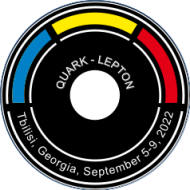Speaker
Description
Energy production in our Sun, carried out through the fusion of hydrogen to helium, is accounted for by two distinct processes: the proton-proton (pp) chain and the carbon- nitrogen-oxygen (CNO) cycle. Both sequences of reactions involve the production of several electron flavor neutrinos, the so-called solar neutrinos. Over the last decades, their detection has brought to light a useful connection between elementary particle physics and astrophysics. Along with the measurement of atmospheric neutrinos, solar neutrinos provided the experimental proof of the neutrino flavor oscillation, and thus the evidence of physics beyond the Standard Model, which represents a milestone in modern particle physics. Furthermore, being produced in the fusion reactions occurring in the core of the Sun, solar neutrinos have contributed to broadening our understanding of the internal mechanisms of stars. Although thoroughly studied, solar neutrino physics still represents a rich field of research since we have reached the era of precision measurements. In this talk, an overview of the most recent results in this field, along with the most important physics implications, will be presented. Particular focus will be dedicated to the recent results achieved by the Borexino experiment, regarding the comprehensive spectroscopy of neutrinos emitted in the pp chain and the experimental confirmation of the occurrence of CNO cycle. Moreover, SuperKamiokande results on the precision measurement of boron-8 neutrinos and its implication on oscillation physics will be described. In conclusion, a summary of the open questions and prospects in the solar neutrino field will be discussed.
